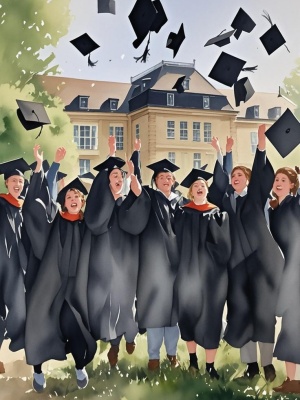The Art of Digital Watercolor: Blending Tradition with Technology
Introduction to Digital Watercolor
Digital watercolor has revolutionized the art world by combining the fluid beauty of traditional watercolor techniques with the versatility of digital tools. This medium allows artists to create stunning, translucent washes and delicate blends without the limitations of physical paper or pigments. Unlike traditional watercolor, digital versions offer unlimited undo options, layer control, and perfect color consistency.
For those exploring AI painting techniques, digital watercolor presents exciting possibilities. Modern software can simulate paper texture, pigment dispersion, and even the natural drying process of real watercolors. The result? Authentic-looking artwork with all the benefits of digital creation.
Key Advantages of Digital Watercolor

1. Unlimited Creative Freedom
Digital watercolor eliminates many physical constraints artists face:
- No more wasted paper from mistakes
- Instant color mixing without muddy results
- Ability to work in layers for complex compositions
- Precise control over water flow and pigment dispersion
2. Advanced Simulation Techniques
Modern applications like Adobe Fresco and Procreate use sophisticated algorithms to mimic:
- Realistic pigment diffusion in "wet" layers
- Paper texture and absorbency variations
- Natural brush bristle behavior
- Drying patterns and edge blooms
Problem-Solution Matrix for Digital Watercolor
Common Challenges and Digital Solutions
Many traditional watercolorists face these issues when transitioning to digital:
| Problem | Traditional Solution | Digital Solution |
|---|---|---|
| Color mistakes | Start over or work around error | Undo/redo or adjust hue/saturation |
| Paper buckling | Stretching paper beforehand | Digital "paper" never warps |
| Limited pigments | Physical mixing limitations | Infinite color palette |
Creating Digital Watercolor Masterpieces
Essential Techniques to Master
To achieve authentic digital watercolor effects, focus on these key methods:
Wet-on-Wet Simulation: Use specialized brush presets that mimic pigment spreading on damp "paper." Many AI art tools now include this functionality automatically.
Layer Management: Keep background washes, midtones, and details on separate layers just like traditional glazing techniques. This allows for non-destructive editing.
Conclusion: The Future of Watercolor Art
Digital watercolor represents an exciting fusion of artistic tradition and technological innovation. While it will never completely replace the tactile experience of traditional watercolor, it offers unparalleled creative possibilities for both professional illustrators and hobbyists. As digital art continues evolving, we can expect even more realistic simulations and creative tools to emerge.
For artists looking to explore this medium, we recommend starting with our digital art gallery for inspiration. Whether creating landscape scenes or portrait studies, digital watercolor opens new avenues for artistic expression while preserving the delicate beauty of this timeless medium.